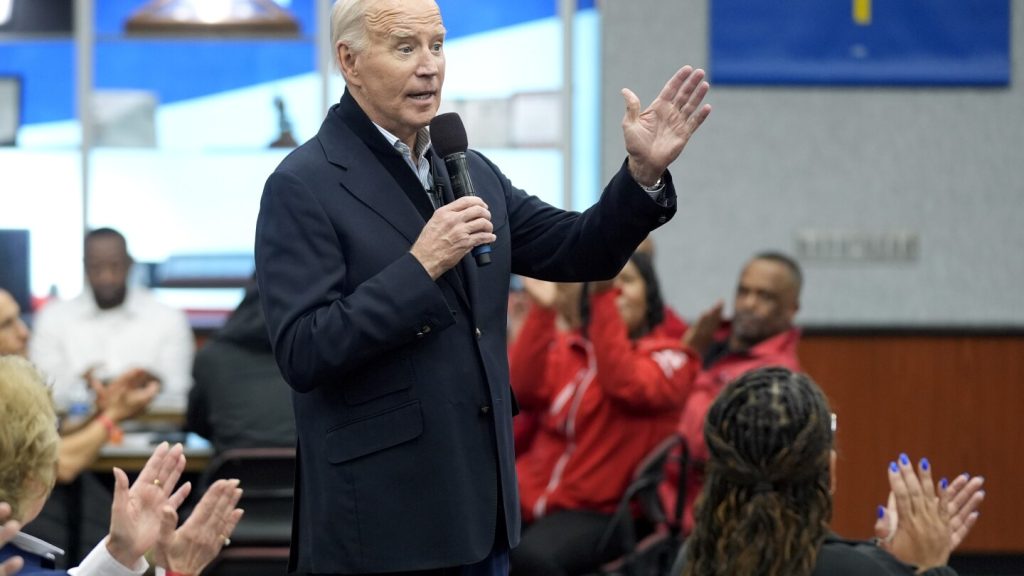President Joe Biden has been making efforts to connect with his various supporter groups by likening his relationship with them to bringing someone to a dance. He expresses gratitude to Irish Americans, Black Americans, unions, bigwig donors, environmentalists, Jewish Americans, teachers, and his Delaware-based campaign staff for being instrumental in his political journey. These shout-outs are meant to make different blocs of voters feel important to the cause but also reflect the conflicting coalitions that both Biden and his opponent, presumptive Republican nominee Donald Trump, need to assemble to win in the upcoming elections.
The Biden campaign sees these statements as a demonstration of the president’s ability to bond with a vast group of voters, emphasizing his sincere connection with people. On the other hand, Trump’s campaign argues that Biden is struggling to keep his coalition together and claims to be siphoning support away from him by attracting key Democrat constituencies such as African Americans, Hispanic Americans, and women. Recent surveys suggest that some nonwhite voters are hesitant to commit to a Biden vote, but it is not indicative of decisive swings toward Trump. There is still room for movement in the polls with more than six months left until the general election.
In order to secure a second term, Biden needs to reassemble the winning coalition of college graduates, union households, younger voters, and Black and Hispanic Americans who supported him in 2020. However, Biden has been facing relatively weak polling numbers among various demographic groups, including a decline in approval among Democrats, Black adults, Hispanic adults, and younger voters since the start of his presidency. This has raised concerns about his reelection chances in November and underscores the importance of convincing diverse constituencies that they play a crucial role in his campaign due to their shared values.
Biden’s strategy involves merging his election year narrative with the values of different supporter groups to show them that they hold the key to his reelection. For example, he emphasizes honesty, decency, dignity, and equality when speaking to Irish Americans, highlights the importance of unions and their workers in growing the economy, and acknowledges the contributions of various communities to the fight for social justice. In contrast, Trump has a fervent base of supporters who follow him to rallies and is known for his polarizing rhetoric, particularly towards opponents and critics.
While Trump’s base has been deep but relatively narrow, relying heavily on white, older voters, Biden is focusing on expanding his coalition by appealing to a broad range of demographics. Trump, on the other hand, often uses the word “love” in his speeches but typically directs it towards his base, framing his accomplishments and policies as actions motivated by love for his supporters. As the election season progresses, both candidates are working to solidify their base of supporters and attract swing voters through different strategies and messaging tactics tailored to resonate with their target audiences.


